![Oyster shell from an ancient shell ring complex litters the beach at low tide on SCDNR’s Botany Bay Heritage Preserve & WMA in 2017. Since then, archaeologists with the agency’s Heritage Trust program have waged a war against the clock to excavate the site and catalog thousands of artifacts before it is lost to sea-level rise. [SCDNR photo by D. Lucas]](../../../assets/newsphotos/jul13ShellRing.jpg)
Oyster shell from an ancient shell ring complex litters the beach at low tide on SCDNR’s Botany Bay Heritage Preserve & WMA in 2017. Since then, archaeologists with the agency’s Heritage Trust program have waged a war against the clock to excavate the site and catalog thousands of artifacts before it is lost to sea-level rise. [SCDNR photo by D. Lucas]
August 9 is International Day of the World's Indigenous People. In South Carolina today, there are eight state-recognized Native American Indian entities. Over the years, archaeologists have unearthed the rich histories of the state's Indigenous People, learning more about the First Peoples to live on South Carolina soil.
This includes the community who established the Pockoy Island Shell Rings located at Botany Bay Plantation Heritage Preserve, and others whose history is captivated in cultural preserves across the state, managed by SCDNR.
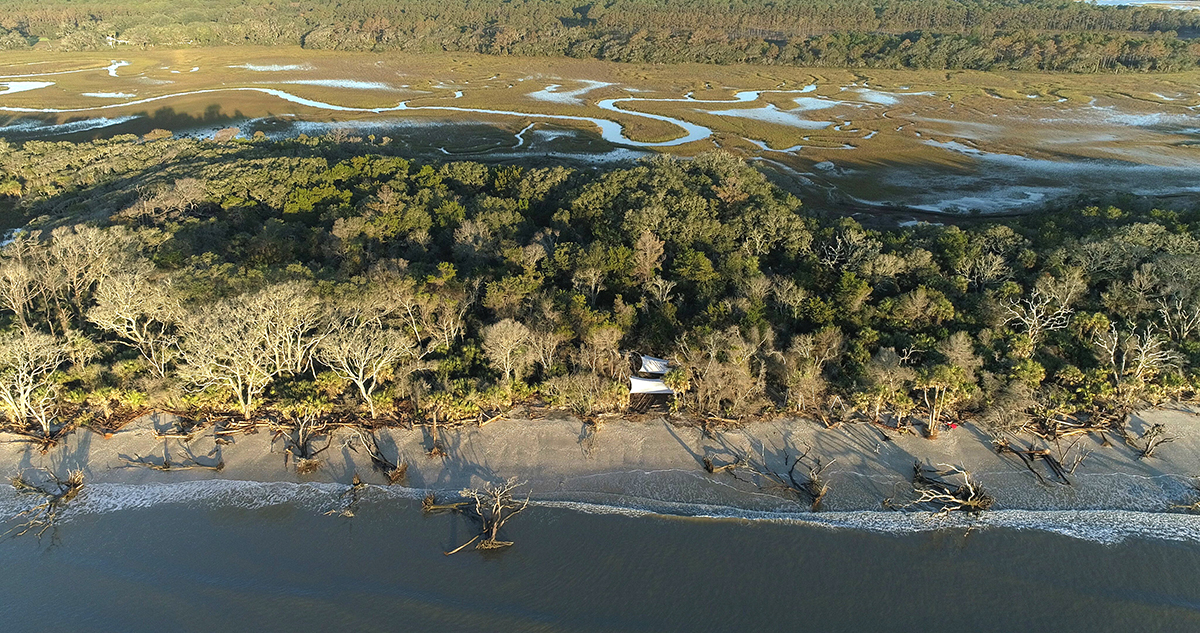
Pockoy Island (Photo: Jamie Koelker of Koelker and Associates, LLC)

Located in Beaufort County is the 3-arce Green's Shell Enclosure Heritage Preserve, dating back to 1335 A.D.! The property is a low earthen embankment, two to six feet high, and 30-feet wide at the base. During the Irene period, 1300 to 1450 A.D., this two-acre shell and earthen embankment was a fortified village with defensive features like enclosures, palisades and ditches.
The Native American inhabitants of Green's Shell Enclosure were farmers who lived in large villages. They used shell to make gorgets, masks, beads and for religious rituals. The inhabitants used whelk and conch shells to drink "Black Drink."
Their ritual beverage, "Black Drink," was made from the plant Ilex vomitoria, more commonly known as Cassina, which still grows on the preserve.
Not only did these villagers make items from shells for personal use, these popular shell products were also traded far into the interior of the eastern United States.
Green's Shell Enclosure is part of the Port Royal Sound Sea Kayak Trail. In 1991, the preserve was purchased with funds from the Heritage Trust Program and a grant from the South Carolina Department of Parks, Recreation and Tourism. Today, the preserve is managed by SCDNR, the Town of Hilton Head Island and the Environmental and Historical Museum of Hilton Head Island. The preserve is a passive park focusing on archaeological features.
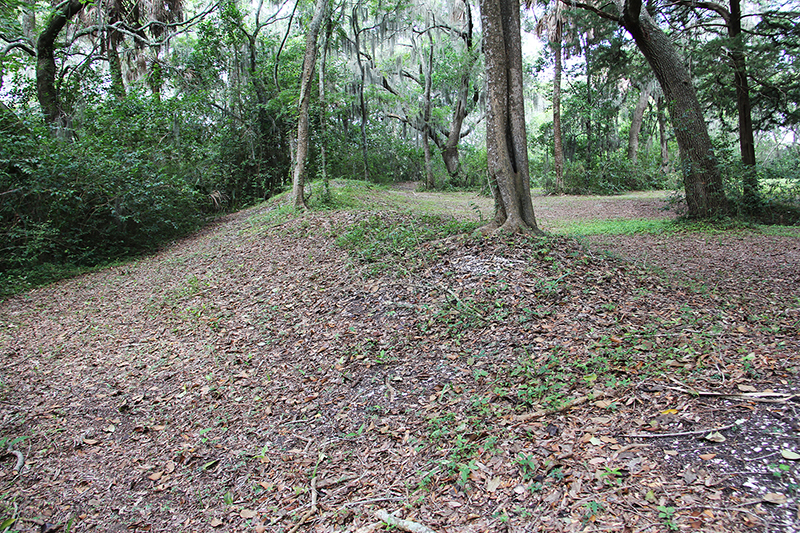
Green's Shell Enclosure Heritage Preserve
Down the road a bit is the South Bluff Heritage Preserve. The South Bluff Shell Rings contain a crescent-shaped ring and another that was once a complete ring. Because of a reduced level of erosion, South Bluff is one of the most well-preserved shell ring complexes in the state.
Shell rings occur along the coast and are close to tidal creeks. They were created during the Late Archaic Period 5,000-3,000 years ago. Archaeological work indicates that during this period, human groups made extensive use of coastal resources, particularly shellfish. The remains of the shellfish, along with refuse from other human activities, form midden deposits from which archaeologists can reconstruct past human activities and environments.
It's an upland area containing a well-developed maritime forest community with dominant species including live oak, cabbage palmetto, loblolly pine, wax myrtle, yaupon holly, and switchcane. South Bluff provides habitat and protection for a variety of wildlife species including resident and migratory birds, game and non-game mammals and reptiles and amphibians.
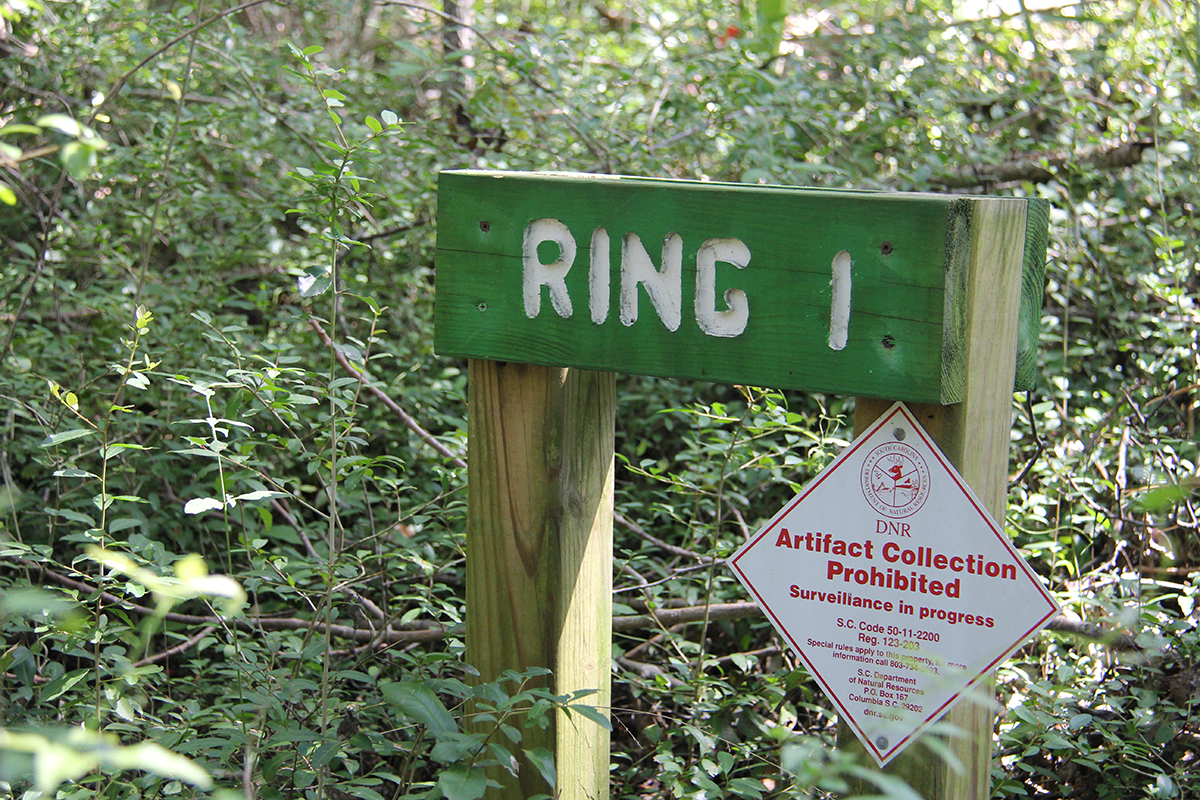
Green's Shell Enclosure Heritage Preserve
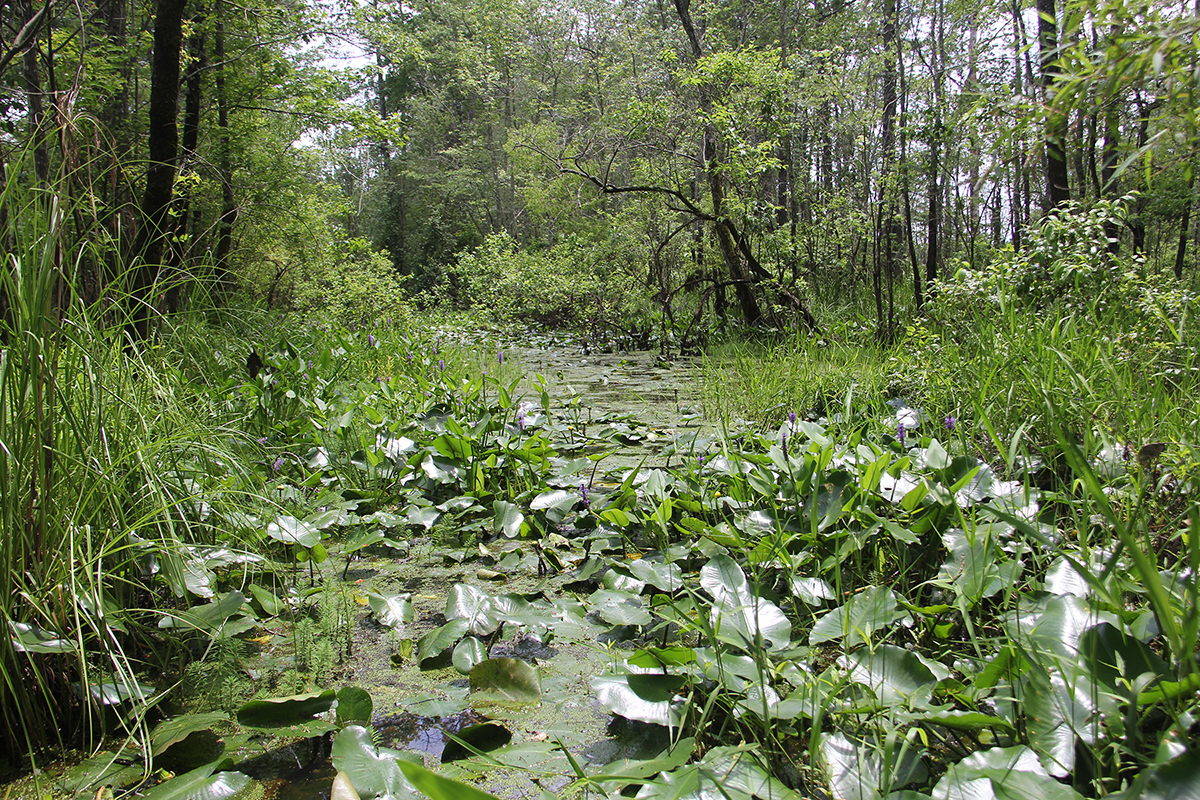
Congaree Creek Heritage Preserve
In the Midlands, bountiful wildlife, sunlit dappled forest paths and 12,000 years of history and prehistory are tucked away in a pristine setting at Congaree Creek Heritage Preserve, just a stone's throw from downtown city lights. The 627-acre preserve, owned and managed by SCDNR, borders the Congaree River and Cayce, South Carolina.
Archaeologists have found tools, pottery sherds, arrowheads and other evidence that people have lived in and around the preserve for nearly 12,000 years. A nearby road that runs through part of the preserve is part of the Old Cherokee Trail which led from the Appalachian Mountains to the coast.
Projectile points found in the area indicate it was an Indian gathering place about 10,000 to 12,000 years ago. From a dig on adjacent property owned by Dominion Energy, formerly SCE&G, there is evidence of people living there 2,500 years ago, as well as a home site from the 1760s.
The American Indians who once lived there "were probably hunter-gatherers of 20 or 30 who moved around 10,000 years go," says Sean Taylor, archaeologist for SCDNR's Heritage Trust Program. "They didn't stay for long so they didn't generate much trash. The people were mobile."
Today, hikers can walk a 2.5-mile trail loop in about 1.5 hours and view ponds where duckweed and lily pads flourish and teem with wildlife, including an occasional, elusive alligator. Seven bridges and one bench recently were added to the trail. The area is also home to a variety of snakes, turtles, bobcats, deer, hogs, hawks, waterfowl and other birds. At one time, this 70-year-old hardwood forest was farmlands. A parking area is available on the right of Old State Road just before the pavement ends.
The White House designated the Guignard Brickworks Trail, which runs through part of the preserve, a Community Millennium Trail. This trail, as do dozens of Millennium Trails throughout the nation, reflects community history through natural settings.
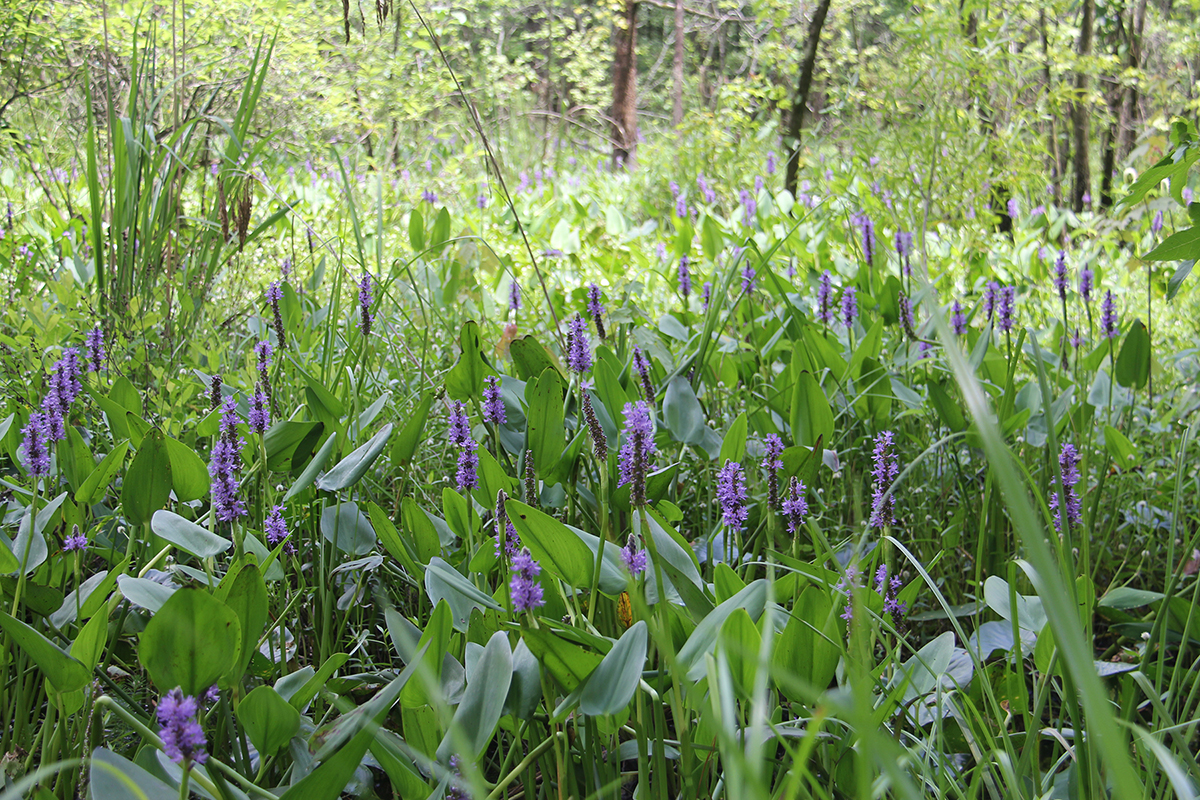
Congaree Creek Heritage Preserve
You can view more about these Heritage Preserves and others by
visiting https://www2.dnr.sc.gov/ManagedLands/ManagedLand/Preserve



